Production companies looking to build an international presence need a globally-minded approach to safety and compliance. This is especially true when it comes to hoists that lift, lower, and suspend equipment over performers and their audiences. It only makes sense that there should be some well-structured rules in place to make sure those hoists are designed, installed, and used safely.
So, what are the rules and who makes them?
To answer this question, we must break down the term “rules” into three separate concepts:
- Regulations
- Standards
- Directives
There is a big difference in the scope of each of these terms, as well as who is responsible for creating the content of each.
Regulations
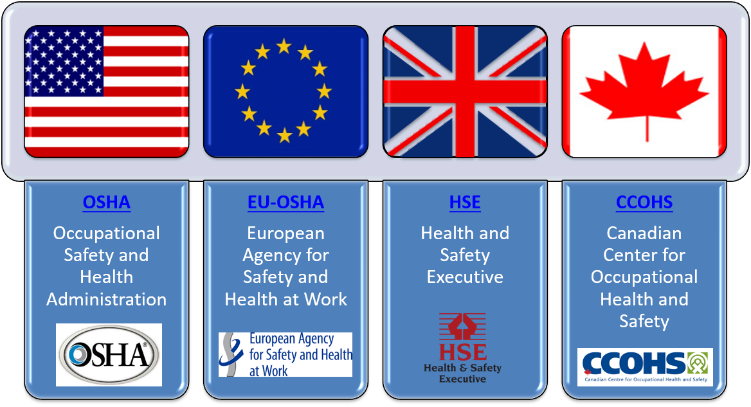
Regulations are legislations from a government body that carry the force of law. Regulations must be followed at the risk of criminal and/or civil penalties. At the highest level, regulations are limited to the scope of protecting workers from hazardous conditions.
In addition to the organizations displayed here, there are a variety of other authorities having jurisdiction have additional legislation, specific to individual municipalities, states, provinces, etc., which often address public safety concerns.
Standards
Sometimes referred to as Codes of Practice, standards are developed by member organizations. These organizations typically include manufacturers, industry professionals, educators, and other subject matter experts.
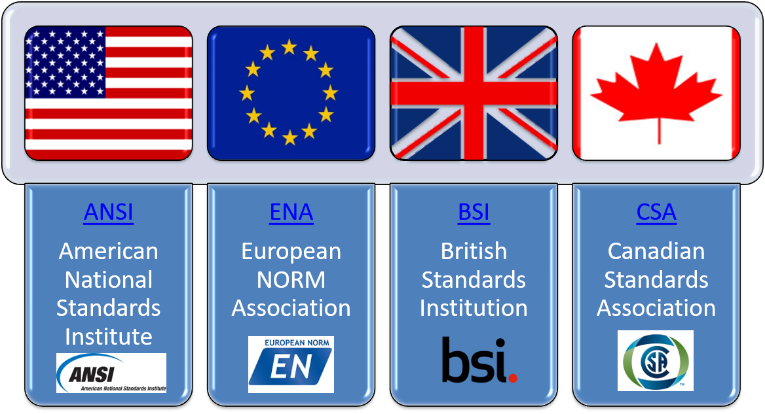
While Standards are considered industry best practices or “industry consensus”, and therefor voluntary, it is possible for a standard to be incorporated into legislation, making them mandatory. For example, ANSI standards are voluntary, but can be adopted by OSHA and become law if OSHA references a specific standard in OHSA regulations. This is called “incorporation by reference”. Other countries can likewise codify standards.
Additionally, following voluntary Standards indicates a level of due care in the design and manufacture of products that may be referenced in legal disputes.
In some regions, such as the UK, the HSE can assign a special legal status to an Approved Code of Practice (ACOP); which provides practical advice on how to comply with the applicable regulations. Those who follow the ACOP can be confident that they are operating lawfully. However, alternative methods are still permissible, so long as they can be shown to provide a level of safety equal to or greater than the ACOP.
The Entertainment Services and Technology Association (ESTA) is a US-based non-profit member organization; founded in 1987. ESTA has created a wide variety of standards, specific to the entertainment industry, which are published through ANSI. Unlike most industry standards, which must be purchased, ESTA has arranged sponsorship for these standards to be freely accessible to the public on the Technical Standards Program page of their website. tsp.esta.org
Directives
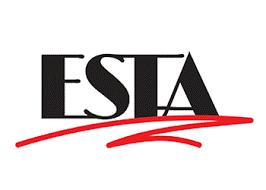
Directives are legislative acts that set a general requirement without directly prescribing the means by which that requirement must be satisfied. This allows the regulatory bodies of the affected regions to develop their own legislation, under a set of guidelines set forth in the directive. Directives are how the European Union creates legislation for all member countries while leaving those countries the freedom to develop their own regulations, regarding the specifics of compliance.
The SQP2:2018 Code of Practice (CoP)
The most recent and relevant update is the revised SQP2:2018 Code of Practice, directly impacting the design and use of electric chain hoists in the entertainment industry. Published by IGVW (an EU organization, based in Germany), this code of practice has been incorporated into the EN 17206 standard for Lifting and Load-bearing Equipment in the Entertainment Industry. There is a 15-year backstory with a cast of acronyms explaining how the current SQP2 CoP has evolved, but for now we’ll focus on what it looks like today.
The designations D8, D8+, and C1 have been buzzwords among the entertainment community for several years now. Although these designations are specific to EU standards, many entertainment professionals in the US and other regions have been requesting products that comply with these designations.

So, why is there such a growing demand for this in regions where it is not required or recognized by regulatory agencies?
Entertainment is a global industry.
Production companies who tour with their own equipment want that equipment to be acceptable for use anywhere they go.
The EU has been setting a trend in the development of safety standards.
A growing number of regions, such as Brasil, have adopted the SQP2:2018 CoP into their own requirements.
Safety always comes first.
The credibility associated with the SQP2:2018 CoP represents a higher level of safety, which can be attractive to clients and insurance providers.
The Differences Between D8, D8+, and C1 Hoists
The differences between what qualifies a hoist as D8, D8+, and C1 are best understood by imagining the three distinct scenarios they intend to address by reducing the risk of overhead use.
- D8: The hoists are parked (de-energized, not moving). Additional rigging attachments are installed as a secondary means of supporting the load.
- D8+: The hoists are parked. The load is suspended solely by the hoists. No movement of the hoist takes place while people are under the loads.
- C1: The hoists are in operation while people are under the load.
These three scenarios all correlate to the potential for an accident resulting in injury or death. For the purposes of these requirements, there is no distinction between who is in danger, whether they are technicians, performers, or the general public.
Due to the minimal risk associated with the D8 classification scenario, most electric chain hoists meet this requirement by default. This assumes that whoever installs or operates the hoist complies with the requirement for a secondary means of suspension.
The secondary means of suspension must also meet two specific requirements:
- Be installed in such a way that it ensures the shortest possible or no drop height. Therefore, the secondary safety device shall be equipped with a shortening device.
- Have a rated capacity of twice that of the hoist.
Design Requirements for Using D8+ Hoists
In scenarios where D8+ hoists are necessary, there are several specific design requirements along with some caveats. Let’s explore the most straightforward ones first.
Double Brakes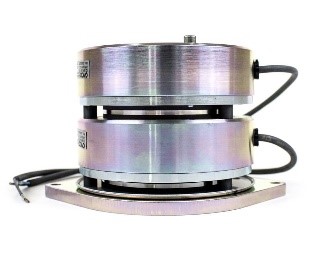
Double brakes are the most commonly used design for compliance with the requirement to achieve redundancy in the safety mechanism, responsible for holding the load in place. The most basic requirement of the SQP2:2018 CoP is a secondary device to hold the load in place.
Chain with an 8:1 design factor and compliant to DIN EN818-7

The EN 818-7 standard addresses three types of chain: T, DT, & DAT, each with different properties and applications. Chains approved for use in electric chain hoists with higher speeds and capacities will be marked with DAT.
Prior to 2018, the D8+ criteria required the chain to have a design factor of 10:1. SQP2:2018 reassessed this requirement and reduced the design factor to 8:1. The logic behind the original 10:1 requirement was to align the design factor with what is typical for life safety. Since the use of a D8+ hoist is limited to people being under the load only when the hoists are parked, the dynamic forces are no longer in play, thus allowing for a reduced design factor.
SQP2 Chain Attachment Requirement

A minor but important part of the SQP2:2018 CoP requires that the loose end of the chain be securely attached to the hoist. This requirement applies to all applications. Whether the loose end of the chain is fastened to the frame or not, adding a physical chain stop meets the criteria. Fastening the chain to the hoist body will usually provide a warning indication, when the method of attachment yields to the forces of the hoist. However, the use of a chain stop should prevent that altogether. If the hoist is not configured with a limit switch, or the limit switch does not function properly, the chain stop can act as a physical barrier, to prevent the chain from separating from the hoist.
Clutch & Load Limiter Location & Interaction
The location and interaction of the clutch/load limiter has been a topic of  debate throughout the evolution of the standards development process. When a friction coupling device, such as a clutch, is located between the lift wheel and the brake, it is in the “load-path” and considered to be a direct-acting lifting force limiter. This design doesn’t preclude the hoist from a D8+ designation, so long as the clutch is configured for a considerably high trigger point of more than twice the rated capacity of the hoist and not be used for overload protection. In this design, the direct-acting lifting force limiter serves solely to protect the drive of the hoist and cannot be considered for use as overload protection. However, compliance with EN 14492 (Annex E) requires that a friction torque limiter shall be located outside the load path.
debate throughout the evolution of the standards development process. When a friction coupling device, such as a clutch, is located between the lift wheel and the brake, it is in the “load-path” and considered to be a direct-acting lifting force limiter. This design doesn’t preclude the hoist from a D8+ designation, so long as the clutch is configured for a considerably high trigger point of more than twice the rated capacity of the hoist and not be used for overload protection. In this design, the direct-acting lifting force limiter serves solely to protect the drive of the hoist and cannot be considered for use as overload protection. However, compliance with EN 14492 (Annex E) requires that a friction torque limiter shall be located outside the load path.

Hoists designed specifically to meet the requirements of D8+ applications will not have a clutch in the load path. In these configurations, the clutch is located on the motor end, to protect the drive of the hoist. Overload protection must be provided by an indirect-acting capacity limiter, such as a load cell and control system which will stop the hoist(s) in an overload situation.
Limit Switches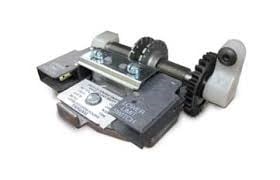
Limit switches are recommended, but not required for D8+ hoists, under the SQP2:2018 CoP. However, EN 14492 (annex E) does require the use of limits switches. Hoists used in C1 applications must be equipped with double set of limit switches. Limit switches are electrical devices which interrupt the control circuit when mechanically activated. Conditions such as phase-reversing or incorrect alterations to the wiring can render limit switches ineffective.
Load Monitoring
Load monitoring is always an enhancement to safety, whether required or not. Protection against overload is always mandatory for the use of electric chain hoists. The inclusion of an overload shutdown is compulsory for C1 applications. D8 and D8+ applications may employ technical and/or organizational methods of overload protection.
In cases where the number of hoists or the speed of the hoists cannot be properly monitored by the operator(s), then an automatic overload shut-down is required. The method applied is a result of a risk assessment process, conducted by a competent person and shall be documented in writing. Guidance on the risk assessment process can be found at www.igvw.de.
C1 System Requirements
When we see a hoist labeled as C1, it’s important to understand that unlike a D8+, the C1 designation is not limited to the hoist, but rather the entire system to which that hoist belongs. The C1 on the hoist body simply means that it is compatible with a C1 application, which has specific requirements for the control and monitoring of the hoists. The additional requirements for the hoist, in a C1 application, are
- double brakes
- double limit switches
- overload shut-down at 120%
The control systems used start with the requirement of overload shut-down. It would not be effective to have just one hoist among a group shut-down from an overload. The control system would need to able to shut down the entire system, should any hoist be overloaded.
A necessary component of overload shut-down is the ability to monitor the loads. Due to the potential for high risk, associated with moving loads over people, compliance with the requirements which define C1 applications may be required by law in some regions (e.g. Germany)
SQP2 System Requirements
SQP2:2018 prohibits the method of monitoring to be measured by the electrical current consumption of the motor, indicating the need for load cells in such systems. Additional requirements of the control system are based on the results of the risk assessment.
The minimum requirements for electrical equipment and controls, for all systems are:
- Rotating field and phase sequence control.
- Emergency stop devices accessible to the operator.
- Protection from electrical shock.
- Protections from accidental start-up and automatic restart after power failure and restoration.
- Protection against influences
- Selection of the motion direction.
- Go-button.

Additional requirements and information can be found in DIN EN 60204-32, DIN 56950-1:2012-05, EN 14492-2:2019, and EN 17206.
Understanding the requirements set forth by the SQP2:2018 CoP and other applicable standards, is not as simple as checking off a list of basic components. The installation and operation of safe rigging systems begins with the risk assessment process.
The regulations, standards, directives, and the design of the products to which they apply are only as effective as our ability to identify the potential for hazards and minimize the risks to everyone involved.
The CM-ET Lodestar D8+ SQP2
Made in the USA, the CM-Entertainment Lodestar D8+ ensures the highest level of safety for permanent applications and global tours. VIEW PRODUCT.
The clutch, outside the load path, protects the drive of the hoist; double brakes provide redundancy; The zinc-plated or Black Phosphate exceeds an 8:1 design factor. Chains marked with H22 and/or DAT are compliant with EN 818-7 standards.
North America - EN




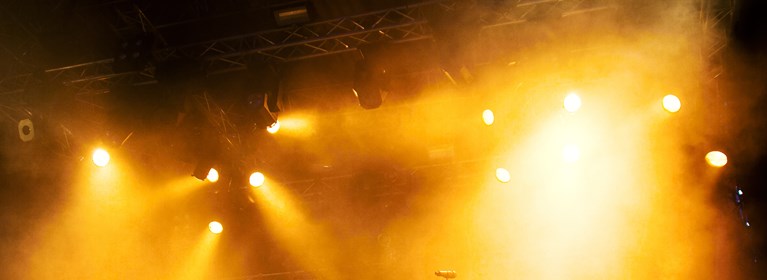







 debate throughout the evolution of the standards development process. When a friction coupling device, such as a clutch, is located between the lift wheel and the brake, it is in the “load-path” and considered to be a direct-acting lifting force limiter. This design doesn’t preclude the hoist from a D8+ designation, so long as the clutch is configured for a considerably high trigger point of more than twice the rated capacity of the hoist and not be used for overload protection. In this design, the direct-acting lifting force limiter serves solely to protect the drive of the hoist and cannot be considered for use as overload protection. However, compliance with EN 14492 (Annex E) requires that a friction torque limiter shall be located outside the load path.
debate throughout the evolution of the standards development process. When a friction coupling device, such as a clutch, is located between the lift wheel and the brake, it is in the “load-path” and considered to be a direct-acting lifting force limiter. This design doesn’t preclude the hoist from a D8+ designation, so long as the clutch is configured for a considerably high trigger point of more than twice the rated capacity of the hoist and not be used for overload protection. In this design, the direct-acting lifting force limiter serves solely to protect the drive of the hoist and cannot be considered for use as overload protection. However, compliance with EN 14492 (Annex E) requires that a friction torque limiter shall be located outside the load path.




